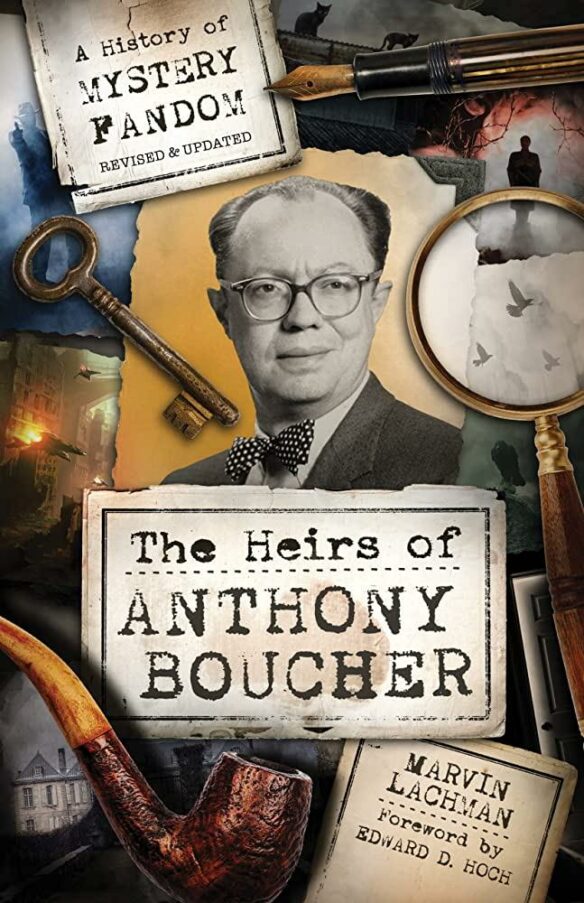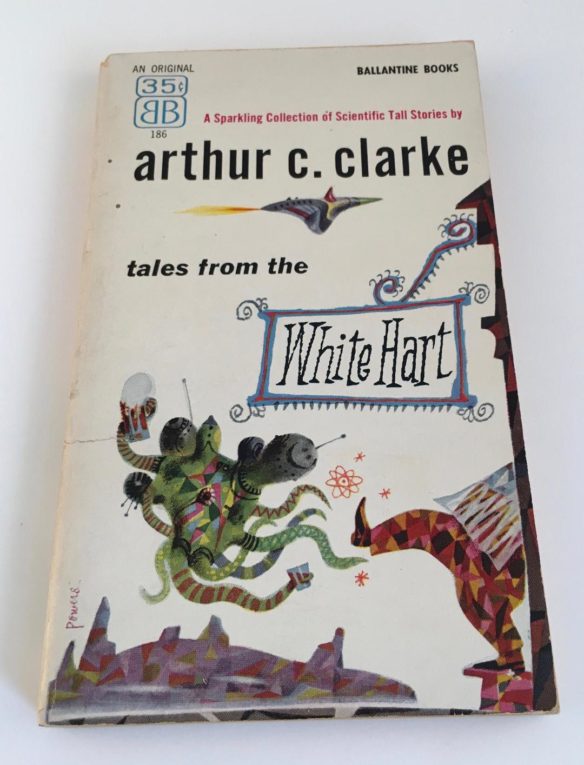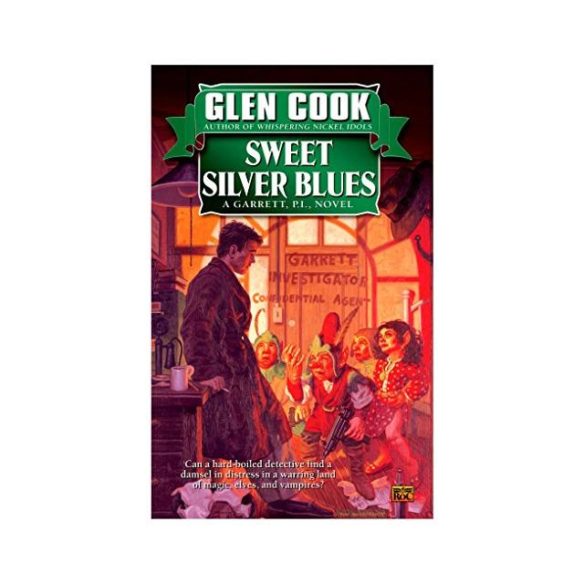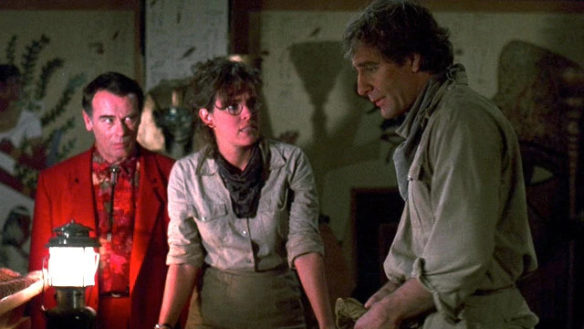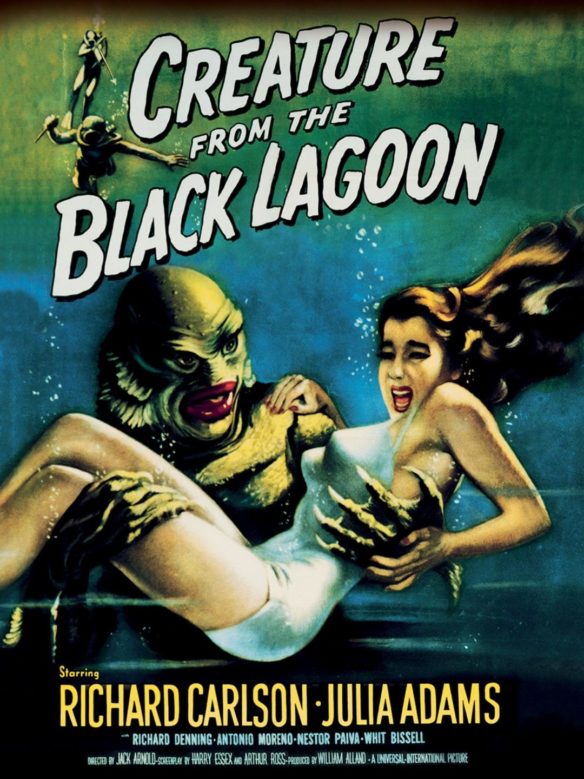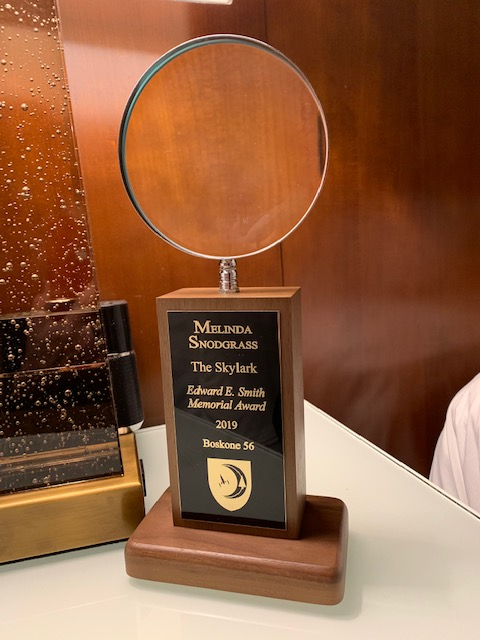(1) VENITA BLACKBURN Q&A. “How Venita Blackburn Wrote a Sci-Fi Novel About Sex, Grief, and Debt Collection” at Interview Magazine.
RITA BULLWINKEL: Black Jesus and Other Superheroes and How to Wrestle a Girl are two of my favorite books I’ve ever read. And Dead in Long Beach, California, I just gobbled it whole in one sitting. I really feel like it is a book of science fiction. How do you feel about that genre camp?
BLACKBURN: I don’t think about genre like that, so I don’t approach any kind of work with one tone or angle as the goal. I have to have the voice that matters to me. But for this one, I did have this intention of doing this sort of high fantasy sci-fi, speculative kind of world that was tethered to our current modern world in a way. And as I kept going, I figured out, “Oh, the thing that’s nagging me, the thing that’s most hard to write is actually the part that’s closer to reality, and that’s the part I need to start investing more of my energy in.” That was a turning point during the early drafting stages, where I had to readjust the proportions and the vision and the scope. But I always knew it was going to be a little bit out of this world. Of course, the original title was “Lesbian Assassins at the End of the World,” so I was definitely going to reach far beyond what we know in this tangible universe. So that was fun to write, especially during the pandemic, when I was very disconnected from humanity. I wanted to be someplace safer, someplace where I understood everything, where I knew what was going to happen. So I started to get invested in that process and, apparently, that is a pretty cross-genre kind of way of looking at a story.
(2) LIVE FROM 1965. James Davis Nicoll fed the Young People Read Old SFF panel James Schmitz’ “Balanced Ecology” from a 1965 issue of Analog, and one of the nominees for the first Nebula Awards (1966). What did they think? Well, they didn’t hate it.
(3) NESFA NEWS. The 2023-2024 winners of the NESFA Short Story Contest were announced at Boskone 61 last weekend:
- Winners (tie): Dragana Matovic of Serbia for the story “Outside the Rain Was Relentlessly Falling” and Dr. Jennifer Grimes of Milford, MA for the story “The Simulation: Subject Ashe Klinn”.
- Runner-up: Michael Barron of Parkville, MD for the story “The Last Time My Twin Destroyed the World”.
- Honorable Mention: Jessica Li of Fremont, CA for the story “Wed the Sea Angels”.
- Honorable Mention: Tyler Robinson of Dexter, MO for the story “Acid Memory Reflux”.
(4) STANDING BY. Hazel’s Picture Gallery, the massive archive of fanhistorical photos hosted by Chaz Boston Baden, isn’t around right now, for reasons he shared on Facebook last month.
It turns out my unlimited hosting account was not as unlimited as I’d thought. In particular, it’s “not intended to be used for data backup or archiving purposes.” And 20-plus years and a quarter-terabyte of photos is clearly an archive of my own.
So I’m learning how I can rebuild the Gallery within my hosting service’s rules. It’s going to be a process, but we’ll get there.
(5) DO YOU KNOW THE WAY TO OSCARLAND? “Ryan Gosling, America Ferrera, Jimmy Kimmel Spoof Barbie in Oscars Promo” in The Hollywood Reporter.
Jimmy Kimmel is ripping the Barbie parody band-aid a full month before the Oscars.
The Jimmy Kimmel Live! host dropped a five-minute short on Monday night, directed by JKL‘s Will Burke, hyping his March 10 gig emceeing the Academy Awards — re-creating many Barbie sets and reuniting four of its castmembers in a spoof that finds a hapless Kimmel trying to make his way to the Dolby Theatre. “Since the dawn of time, men have been getting lost,” says a voice-of-God Helen Mirren, spoofing her own narration of the Margot Robbie feature. “This is the story of one such dum-dum.”…
(6) THE MARVELS MINI-REVIEW. [Item by Daniel Dern.] The Marvels is now on Disney+ (as in, available to subscribers – we just watched it), and, I see, also on DVD/BluRay in libraries (having just checked my local library/network).
I liked this a lot. It was (IMHO) a fun, well-done ride throughout, with some unexpected scenes and bits.
Some brief possibly-helpful non-spoiler notes:
- If you haven’t already watched the Ms. Marvel series (via Disney), it would help, I’m sure, so you know who (within the Marvel video universe) Ms Marvel is (there’s some powers differences vs the comics). And it’s a good show, well worth watching.
- Captain Monica Rambeau’s story starts in WandaVision. I’m not sure watching WV for this is essential (they do one-line-summarize, which feels sufficient vis-a-vis the movie). IFTM (It Feels To Me)(and it’s implied/flashbacked) that some other of Rambeau’s character/backstory takes place in the Captain Marvel movie.
(One wonders what this movie might have been like if Rachel Brosnahan had been given that Cap M. role instead of Brie Larsen, yielding The Mazel-ous Ms Marvel 🙂 )

(7) NY FILM/TV TAX CREDIT CRITICIZED. “State-funded report says NY’s $700 million film tax credit is a bust” says Gothamist.
New York’s $700 million-a-year tax break for film and TV productions isn’t providing taxpayers with a good return on investment, according to a new analysis commissioned by the state itself….
…The state’s biggest industry-specific tax break belongs to the film industry, which gets $700 million a year to film or do post-production work in the Empire State. Hochul and legislative leaders are big supporters of the program, which has helped lure hundreds of productions over the years.
The tax break can be considerable. It covers up to 30% of a film’s qualified production costs, with another 10% available if productions are filmed in certain counties north of New York City. The credit is also refundable, meaning the state pays out the excess money if it exceeds a film production’s tax bill.
Last year, TV shows “Saturday Night Live,” “Blue Bloods,” “New Amsterdam” and “God Friended Me” all claimed the tax credit, totaling more than $20 million each, according to state records.
Beyond the lackluster return on investment, PFM’s report surmised that much of the filming that occurred in New York would have happened regardless of the tax credit….
(8) MEDICAL UPDATE. Nancy Collins shared news with followers of her GoFundMe about her recovery from a blood clot in one of her lungs: “What Doesn’t Kill Me Leaves Me With Medical Bills”. Donors have given $6,708 of the $10,000 goal as of today.
February 7th, 2024 by Nancy Collins, Organizer
I had to adjust my goal upward because I just found out how much my Eliquis prescription is costing me even *with* insurance. Holy cow. As it is, I’m having trouble getting it filled. The doctor sent my prescription to the Walgreens I use Monday evening. It’s Wednesday morning and it’s still not in stock. Apparently the “Starter Pack” isn’t kept in stock at any of the Walgreens–or most pharmacies, for that matter. My PCP is trying to get me samples to tide me over. Luckily, I feel okay and have enough energy to go buy compression socks.
I am deeply touched by the response so far. Y’all are good peoples.Today by Nancy Collins, Organizer
I saw my PCP today, and she said my lungs sound good and warned me from taking NSAIDS until I’m off the blood thinners. She also set up an outpatient appointment with a Cancer Care Center for next month, to check that my clotting issues have been resolved. Also, this is the last day I take 4 Eliquis–tomorrow I step down to 2 a day for the next 3 weeks. And it’s also Mardi Gras!
Laissez les Bon Temps Roulez to all of you who have helped by donating or passing along the link!
(9) GARY SWATY OBITUARY. Arizona fan Gary Swaty has died. The CoCoCon announcement on Facebook covered his lifetime of fanac.
He’s been attending science fiction conventions for half a century.
The first con he worked was IguanaCon II, the 1978 Worldcon, here in Phoenix.
He chaired HexaCon 16 and CopperCon 28 and has worked most committee positions at a host of others, especially LepreCons and CopperCons, but also multiple Westercons, World Horror, World Fantasy, Anizona, MythosCon and RandomCon. Most recently he sponsored filk GoHs at CoKoCon.
Gary loved to read poetry on panels at various conventions. He was also a gaming fan and could be found at most of the local gaming conventions.
He was the editor’s assistant for years on ConNotations.
He’s served on the boards of LepreCon, Inc., CASFS and WesternSFA and still held positions on all three when he passed.
He was honoured at LepreCon 42, who made him their Fan GoH.
Perhaps most of all, he’s known for his association with filk, especially through the Phoenix Filk Circle, which he ran for many years.
Bruce D. Arthurs adds, “Hilde and I have known Gary for years, and always tried to catch up with each other at local conventions. One more face that will be missed.”
(10) TODAY’S BIRTHDAY.
[Written by Cat Eldridge.]
Born February 13, 1929 — Carol Serling, (Died 2020.) I try here to write Birthdays that I’ve not done before which is how I come to be celebrating Carol Serling, wife of Rod Serling.
She was, as all her family and friends will tell you, the faithful defender and steward of his work. She was born Carolyn Louise Kramer and she married him in 1948; they were married just twenty-seven years until his heart simply didn’t survive open heart surgery at age fifty.
Upon his death, she became rather active in preserving his legacy. She would become editor and television producer for many of The Twilight Zone-related enterprises including the third iteration of The Twilight Zone series in which she was an executive producer for the first twenty episodes.
She has but one acting credit, in Twilight Zone: The Movie’s “Nightmare at 20,000 Feet” segment, as a passenger. She was a key consultant for this film.
She was the executive producer on Twilight Zone: Rod Serling’s Lost Classics, a two-story film. Ms. Serling found these two unproduced stories by her husband in a trunk at her home.
She donated many of his television scripts and movie screenplays to Ithaca College where her husband had taught courses in creative writing and film and television criticism. The gifts helped the college establish its Rod Serling Archives.
Now we come to her print publications.
She edited five Twilight Zone anthologies (Journeys to the Twilight Zone, Return to the Twilight Zone, Adventures in the Twilight Zone, Twilight Zone: 19 Original Stories on the 50th Anniversary and More Stories from the Twilight Zone), plus the Rod Serling’s Night Gallery Reader with Martin H. Greenberg and Charles G. Waugh.
With David Brode, she wrote Rod Serling and The Twilight Zone: The 50th Anniversary Tribute.
I know that she was responsible for Rod Serling’s The Twilight Zone Magazine by licensing the name to Montcalm Publishing. She would be the associate publisher and consulting editor there.
Carol told her daughters that she would like this poem to be read at the time of her death…
Mary Elizabeth Frye’s “Do Not Stand at My Grave and Weep”
Do not stand at my grave and weep,
I am not there, I do not sleep.
I am in a thousand winds that blow,
I am the softly falling snow.
I am the gentle showers of rain,
I am the fields of ripening grain.
I am in the morning hush,
I am in the graceful rush
Of beautiful birds in circling flight,
I am the starshine of the night.
I am in the flowers that bloom,
I am in a quiet room.
I am in the birds that sing,
I am in each lovely thing.
Do not stand at my grave and cry,
I am not there. I do not die.
(11) COMICS SECTION.
- Tom Gauld’s strategy to save libraries.
(12) PYTHON KERFUFFLE. “John Cleese Responds To Eric Idle: ‘We Always Loathed Each Other’” – Deadline recaps the brawl from X.com:
John Cleese is making it clear that he – and a few other Pythons – are in complete disagreement with long-ago co-star Eric Idle, who last weekend slammed manager (and daughter of Python co-founder Terry Gilliam) Holly Gilliam for what Idle suggested were the troupe’s dwindling finances.
“We own everything we ever made in Python and I never dreamed that at this age the income streams would tail off so disastrously,” Idle posted on X/Twitter Saturday. “But I guess if you put a Gilliam child in as your manager you should not be so surprised. One Gilliam is bad enough. Two can take out any company.”
Cleese left no doubt where he stands on the matter.
“I have worked with Holly for the last ten years,” the Fawlty Towers creator tweeted today, “and I find her very efficient, clear-minded, hard-working, and pleasant to have dealings with.”
Cleese continued, “Michael Palin has asked me to to make it clear that he shares this opinion. Terry Gilliam is also in agreement with this.”
Apparently there’s no love lost between Cleese and Idle, with the latter responding, when asked by an X follower if the two remain close, “I haven’t seen Cleese for seven years.” When another follower replied saying that made him sad, Idle responded, “Why. It makes me happy.”
Today, Cleese responded with an assessment so blunt some followers wondered if it was all a gag: “We always loathed and despised each other, but it’s only recently that the truth has begun to emerge.”
(13) PRIME CLASS ACTION LAWSUIT. “Amazon Prime Video Slapped With Class Action Lawsuit Over Introduction of Ads” reports Cord Cutters News.
Some Amazon Prime customer were angry enough at Prime Video’s introduction of ads that decided to take legal action.
The retail giant is facing a proposed class action lawsuit filed on Friday that alleges it breached its terms of service and misled customers by introducing ads into Prime Video service and then requiring users to pay $2.99 to get rid of them. The Hollywood Reporter first spotted the lawsuit, and posted a copy of the lawsuit on its site.
Amazon turned on the ads to its Prime Video service after telegraphing the move a few months earlier. Executives said the ads would allow Amazon to continue investing in content without having to raise the price of the service. Unlike other subscription streaming services, Prime Video is a feature tied to the online retail company’s Prime service, so raising prices could’ve meant charging people who don’t even use the service a higher rate.
But beyond the introduction of ads, the new standard service also dials back sound and picture quality….
(14) DON’T POOH IN YOUR PANTS, BUT HE’S BACK… [Item by Mike Kennedy.] …and he brought along a new friend. “Tigger arrives in ‘Winnie-the-Pooh: Blood and Honey 2’ trailer” reports Entertainment Weekly.
A couple of years back, British filmmaker Rhys Frake-Waterfield learned that the 1926 book Winnie-the-Pooh — which introduced the characters Pooh, Piglet, Eeyore, and Christopher Robin — was about to fall into the public domain and decided to direct a horror film featuring the quartet. The low-budget result, Winnie-the-Pooh: Blood and Honey, became a viral sensation after stills from the film hit the internet in May 2022.
At the time he was making the film, Frake-Waterfield was unable to feature the character of Tigger, who first appeared in 1928’s The House at Pooh Corner and had not yet bounced into the public domain. Pooh’s tiger buddy does, however, feature in the director’s sequel, Winnie-the-Pooh: Blood and Honey 2, as you can see in the frightening first-look images of the horror franchise’s version of Tigger.
In the film, Winnie-the-Pooh, Piglet, Owl, and Tigger find their woodland home and their lives endangered after Christopher Robin reveals their existence. Not wanting to live in the shadows any longer, the group decides to take the fight to the town of Ashdown, leaving a bloody trail of death and mayhem in their wake….
(15) READER, I CLICKED. “Dinosaur Evergreens Thought Extinct for 2Mil Years Discovered by Park Ranger–the Grove is the ‘Find of the Century’” at the GoodNewsNetwork.
From Australia comes a story too cool to believe. Like a vegetable version of Jurassic Park or King Kong, a copse of pine trees from a species that evolved in the Cretaceous Era were found high in the mountains.
These living fossils, to use the classic phrase, survived both the comet impact and subsequent global firestorm that killed the dinosaurs, as well as two intervening ice ages to make it to our time, and Australian botanists are treating the specimens as a top-secret national treasure.
The Wollemi pine evolved 91 million years ago and went extinct according to the fossil record 2 million years ago, but in the Blue Mountains west of Sydney, a stand of 90 specimens were found high in the more remote peaks in 1994.
For the past three decades, and in extreme secrecy, a team of specialists from the National Parks and Wildlife Service (NPWS) of Australia has been gradually planting small clumps of the Wollemi pine in other locations to help ensure it has every chance to see another 91 million years.
It helps the story that the Wollemi doesn’t look much like any pine tree you’ve seen in the woods by your house. Sporting Granny Smith apple-green foliage that grows in a pattern similar to a fern, it has a covering of bark reminiscent of Coco-puffs….
(16) GORT REPORT. Dan Monroe at Media Master Design tracks down “What Happened to GORT from The Day The Earth Stood Still?”
(17) VIDEO OF THE DAY. Ryan George takes us inside the “Argylle Pitch Meeting”.
Matthew Vaughn really made a name for himself with the ultra-stylized action movie Kingsman: The Secret Service in 2014. Now he’s bringing us Argylle, with an absolutely stacked cast of actors who are sometimes in it! Argyle definitely raises some questions. Like why was Henry Cavill presented as the star of this movie when he’s in it for just a few minutes? How many twists is too many twists? What does The Division even do? Why did they let her publicly share their secrets for half a decade? What’s that cat doing here?
[Thanks to Mike Kennedy, Andrew Porter, John King Tarpinian, Daniel Dern, Steven Lee, Rich Lynch, Bruce D. Arthurs, Chris Barkley, Cat Eldridge, SF Concatenation’s Jonathan Cowie, and Steven French for some of these stories. Title credit belongs to File 770 contributing editor of the day Daniel Dern.]








